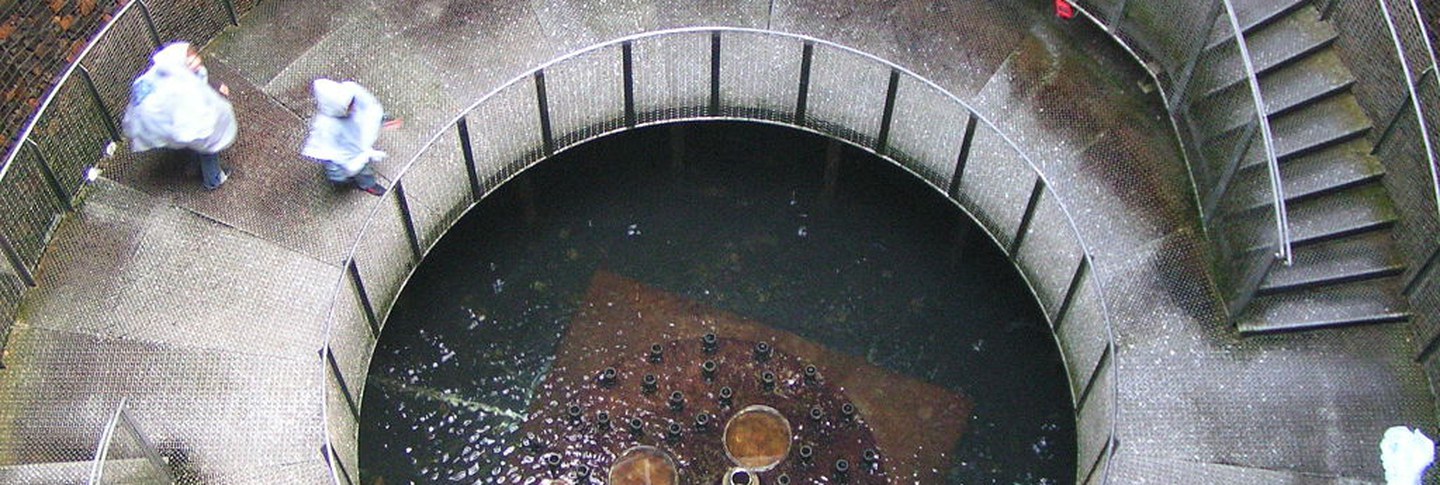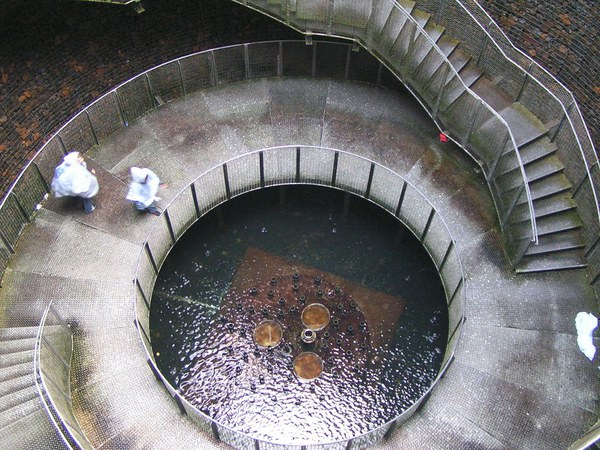Consider the following six gardens: Tofuku-ji Hoto in Kyoto, St. Catherine’s College Quadrangle at Oxford University, the pocket-sized Paley Park in New York, a reflection pool on Bainbridge Island just outside Seattle, the Garden of Birds on the A837 motorway in southwestern France, and a man-made geyser in a suburb of Germany.
To most people, this is just an eclectic list of destinations. But to Saskia de Wit, who is an assistant professor at the University of Technology in Delft in the Netherlands, as well as a recent one-month research awardee at Dumbarton Oaks, these gardens are the “smallest reflections of landscapes” and as such afford insights into the significance of place in design.
In a swift yet incisive presentation that launched this semester’s Mellon Midday Dialogues, de Wit examined how these six gardens represent not only the many different ways in which humans have transformed the physical world, but also their designers’ sensitivity to their particular contexts.
Landscape scholars incessantly debate the concept of “place.” To some, it is inseparable from what is known as genius loci, a term taken from Roman religion that connotes a site-specific atmosphere. To others, it is about creating new possibilities and new ways of experiencing space. For de Wit, though, place always starts with what is already there, and reveals something about the site that we do not already know or see.
If de Wit is particular about her definition of place, it’s because, to her, even the word “particular” is important. “Every one of these places is unique,” de Wit remarked. “I can analyze ten more, and they’ll all be different.”
Indeed, seen through her perceptive eyes, each of the six projects revealed itself to be uniquely adapted to its urban setting. Paley Park, for example, has been shaped as much by active landscape design as by the aftereffects of New York’s fervent development—squeezed into an undeveloped plot, the park feels like an oasis in the surrounding urban space.
But de Wit isn’t just interested in theory. In addition to her role as an educator and scholar, de Wit also boasts a portfolio of realized garden designs located throughout the Netherlands. It’s no surprise, then, that she’s attuned to the sensory experience of walking through places—an aspect that is not always emphasized in previous scholarship.
To make her points clearer, de Wit focused on the geyser park in Germany, properly known as the Wasserkrater. The park, which sits between existing suburban houses, belongs to what de Wit calls a “suburban field,” or a large area of generic and scattered urbanization.
Instead of superimposing a design onto the landscape, the designers, working with natural fault lines beneath the site, created a geyser that draws attention to the geological properties of the location. As a result, a visit to the Wasserkrater involves more than just the sense of sight (the tall column of water erupting into the air). The smell of spring water, the moisture condensing on one’s skin, and the boom of the artificially induced eruptions become inextricably twined.
Ultimately, de Wit’s goals are as multifaceted as the subjects of her investigation. “I think of my work as serving two purposes,” she concluded. “On one hand, it provides a set of tools—or rather, ideas—for practicing landscape architects. On the other, it is a reflection on the metropolitan landscape.”

